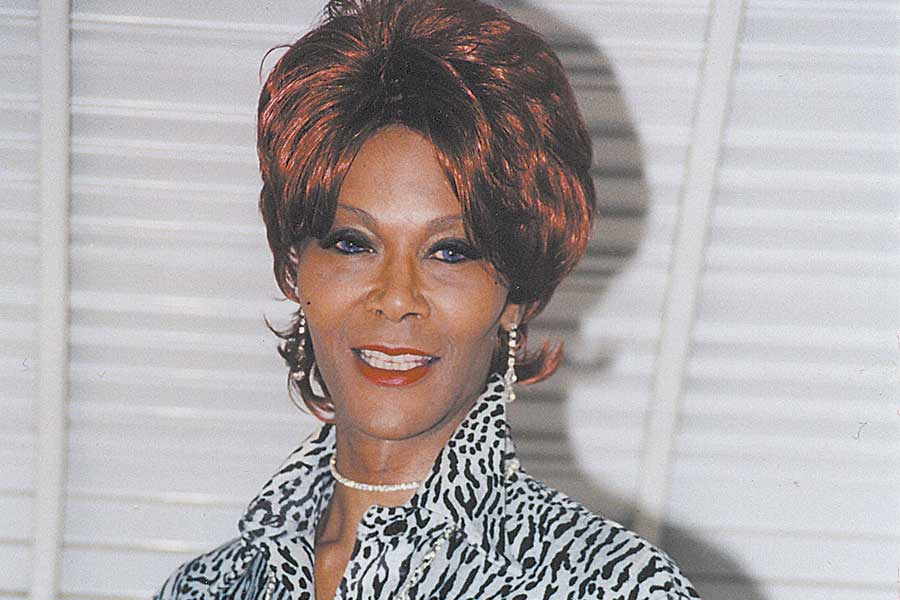Twenty years ago this month, Trans woman Nizah Morris was found by passers-by in Center City with a fatal head wound, shortly after being helped into a police vehicle for a purported “courtesy ride.”
The intervening 20 years, and all that has happened in this country, have left many of us very different individuals. With the advent of social media, more people realize that police sometimes mistreat — and yes, even kill — innocent individuals.
But in December 2002, most folks tended to trust the police. Law enforcement could tell a whopper of a lie and it would be believed. The advent of social media was a few years away. In Philadelphia, there wasn’t an effective police-oversight board to hold police accountable. The city’s district attorney was widely perceived to be in the back pocket of the police department.
Thus, in December 2002, the police were largely unsupervised by the city administration.
Many of us never heard of a “courtesy ride” prior to Nizah’s death. It was subsequently explained that such rides were done as a favor by police for citizens in need. In Nizah’s case, we were told police offered to take her home because she was very inebriated. Police made the offer around 3:15 a.m. on Dec. 22, 2002.
The sincerity of that official version simply does not ring true. First of all, no one could recall another Trans person of color receiving such preferential treatment. Also, Nizah lived in West Philadelphia. But police dropped off Nizah three miles away from her residence. They transported her a mere two blocks — from the area of 13th and Walnut to 15th and Walnut in Center City.
Evidence began disappearing shortly after Nizah’s death, which occurred two days after the ill-fated ride. For example, her clothing wasn’t preserved for evidentiary purposes.
Onlookers said Nizah had on very high heels that made it virtually impossible for her to navigate her way in her inebriated state. Those high-heeled boots are long gone. So are Nizah’s bolero jacket and her bustier. Folks who helped Nizah into a police vehicle said her bustier had shifted position, her modesty was exposed, and her bolero jacket didn’t have buttons to cover her up. Indeed, when passers-by found Nizah at 16th and Walnut (after her head wound) she was exposed from the waist up.
But police insisted Nizah was sufficiently clothed and could navigate her way into — and out of — a police vehicle without assistance. Their assertions directly contradicted witness statements, but the District Attorney’s Office didn’t care.
A police spokesperson scoffed at the notion that police officers killed Nizah Morris — calling it “preposterous.” And DA Lynne Abraham in 2003 called the courtesy ride a “humanitarian” effort on the part of police.
I’ll never forget a police liaison to the community asking me why Nizah’s family couldn’t be grateful to the police for trying to help her. I thought that was an appalling question. The Morris family firmly believes — to this day — that the police killed Nizah. Why on earth would they be grateful for that?
As questions about the case intensified, advocates demanded to see relevant evidence. In 2008, police threw up their hands and said their entire homicide file for Nizah had disappeared. (I thought to myself: That’s what alleged killers do when they control the investigative file.)
Larry Krasner, the current DA, proved to be a big disappointment to Nizah’s family and her advocates. After he took office in 2018, Krasner promised to have his homicide chief take a fresh look at the case. But Nizah’s advocates never heard back from Krasner: no follow-up; no transparency; no nothing.
Not only did Krasner fail to provide accountability, he vigorously fought PGN’s efforts to enforce a 2008 judicial order for transparency in Nizah’s case. Krasner hid behind a controversial law — the Criminal History Record Information Act — rather than honor the judicial order. It’s clear the gentleman wasn’t willing to go that extra mile to help secure justice for Nizah. (A spokeswoman for Krasner had no comment regarding these concerns.)
But hope springs eternal. Next month, there will be a new governor and a new attorney general in Harrisburg. On the local level, Ben Waxman has promised to meet with advocates to see what he can do about securing justice. He’s a newly-elected state Representative whose district covers the area where Nizah’s body was discovered. He’ll be sworn in next month.
Further down the road, we’ll be getting a new City Council, possibly with an openly-LGBTQ member. That could also help raise awareness about Nizah’s case and bring about justice.
Anne Todd, a longtime ally and the mother of a gay son, recently expressed optimism about the case. Over the years, Todd attended numerous Police Advisory Commission meetings regarding Nizah’s death and took copious notes, which she’s preserved.
“I continue to be haunted by questions about Nizah’s death,” Todd told PGN, in an email. “We cannot allow law enforcement to close off access to the truth. Authorities can no longer expect their actions to be unquestioned. Responsibility and integrity are expected. I’m committed that the full story be revealed.”
Twenty years is a long time. But cold cases much older than Nizah’s have been solved. (I recently read about a school teacher who was murdered in Texas in 1960. Her killer finally was convicted in 2017, 57 years later.)
What we need is political will, and what we need is someone with the moral fortitude to examine the existing evidence and let the chips fall where they may. The current DA in Philadelphia lacks that attribute. But with help from others, I’m confident that one day justice will be achieved for Nizah Morris. And what a glorious day that will be.

